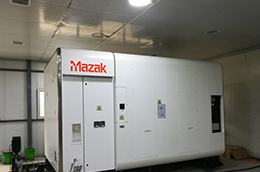Engineering machinery hydraulic system four major categories
[ Info Diffusion:This station | Time:2018-01-29 00:00:00 | hits:0 ] |
|
Hydraulic cylinders have gradually achieved standardization and serialization, and their specifications, varieties, quality and performance have been greatly improved. Especially after adopting new technologies such as electronic technology and servo technology, the quality of hydraulic systems has been significantly improved. It has played a major role in the national economy and military industry.
From different perspectives, the hydraulic system can be divided into four different forms. (1) According to the circulation of oil, the hydraulic system can be divided into open system and closed system. The open system refers to the hydraulic pump sucks oil from the fuel tank. After the oil passes through various control valves, the hydraulic actuator is driven, and the return oil passes through the reversing valve to the fuel tank. This kind of system structure is relatively simple, can exert the heat dissipation of the oil tank, the function of depositing the impurity, but because the oil is often in contact with the air, make the air easy to infiltrate into the system, cause the mechanism to move unsteadily and other consequences. The open system tank is large and the oil pump has good self-priming performance. In the closed system, the inlet pipe of the hydraulic pump is directly connected to the return pipe of the actuator, and the working fluid is closed and circulated in the pipeline of the system. Its compact structure, with less chance of contact with the air, air is not easy to infiltrate into the system, so the transmission is more stable. The variable speed and commutation of the working mechanism are realized by adjusting the variable mechanism of the pump or the motor, avoiding the hydraulic shock and energy loss occurring during the reversing of the open system. However, the closed system is more complex than the open system because of the lack of fuel tanks and poor heat dissipation and filtration conditions. To compensate for leaks in the system, a small flow charge pump and fuel tank are usually required. Due to the unequal flow rate of the single-rod double-acting cylinder, the power utilization will be reduced during the work process, so the actuator in the closed system is generally a hydraulic motor. (2) According to the number of hydraulic pumps in the system, it can be divided into single pump system, double pump system and multi pump system. (3) According to the type of hydraulic (hydraulic cylinder) pump used, it can be divided into quantitative pump system and variable pump system. The advantage of the variable pump is that it can fully utilize the power of the engine within the adjustment range, but its structure and manufacturing process are complex and the cost is high. It can be divided into manual variables, as far as possible control variables, servo variables, pressure compensation variables, constant pressure variables. , hydraulic variables and other ways. (4) According to different ways of supplying oil to actuators, it can be divided into series system and parallel system. In the tandem system, the return of the last actuator is the intake of the next actuator, and the pressure is reduced once for each actuator. In the series system, when the main pump supplies oil to the actuators controlled by the multi-way valve, as long as the outlet pressure of the hydraulic pump is sufficient, the motion of each actuator can be compounded. However, because the pressure of the actuators is superimposed, overcoming the load capacity will decrease as the number of actuators increases. Almost all modern engineering machinery use hydraulic systems (hydraulic cylinders), and combined with electronic systems, computer control technology, has become an important part of modern construction machinery. |

